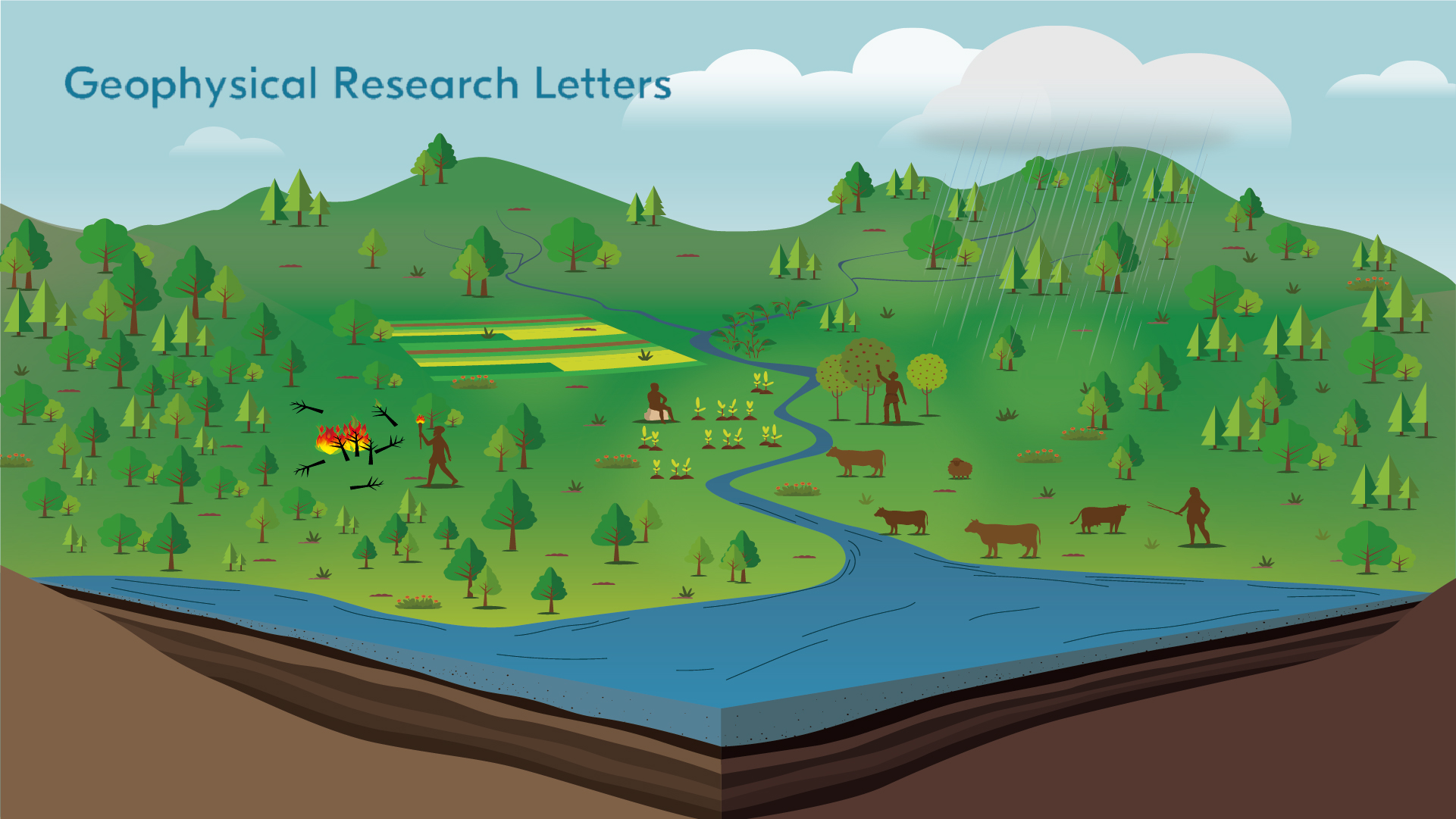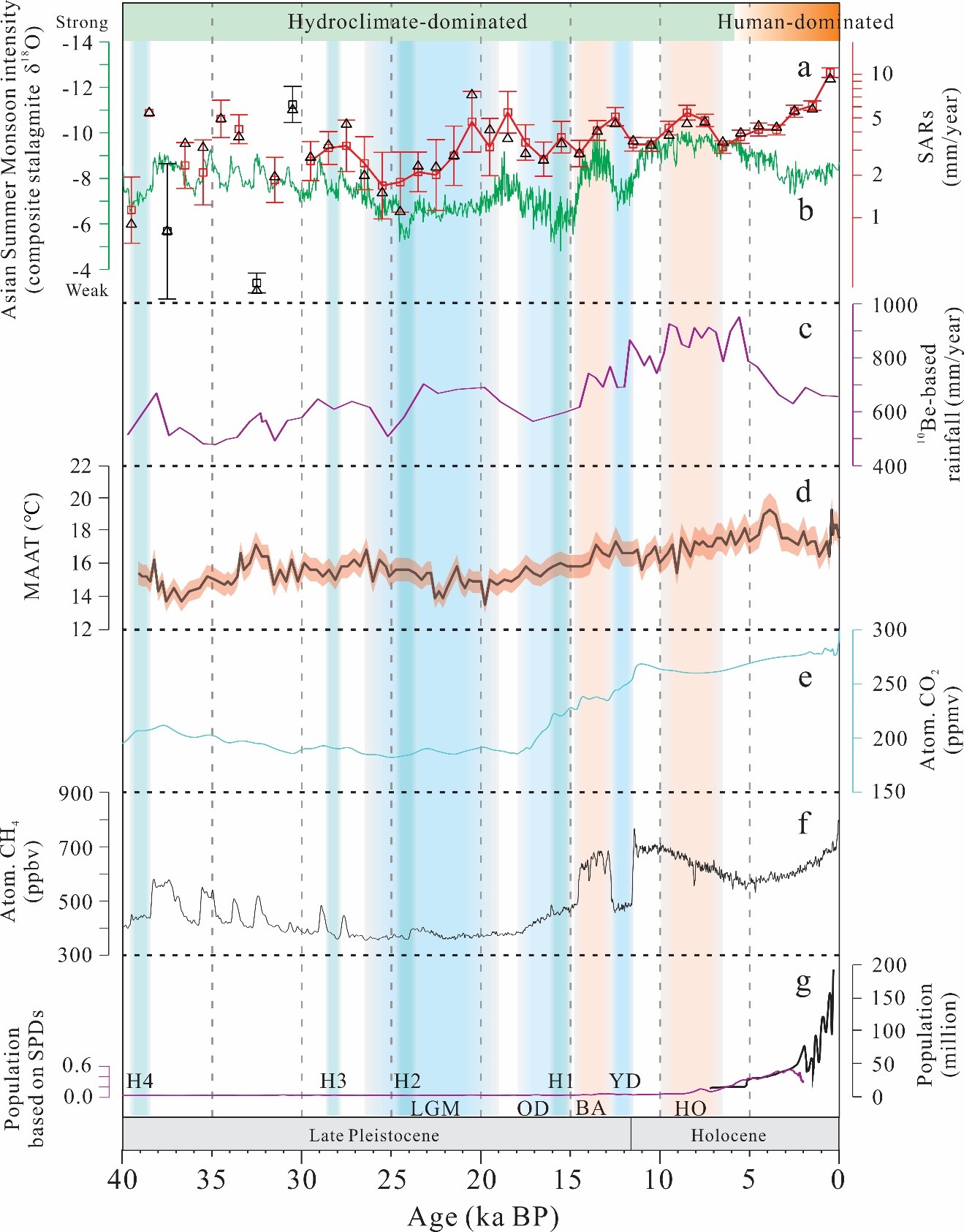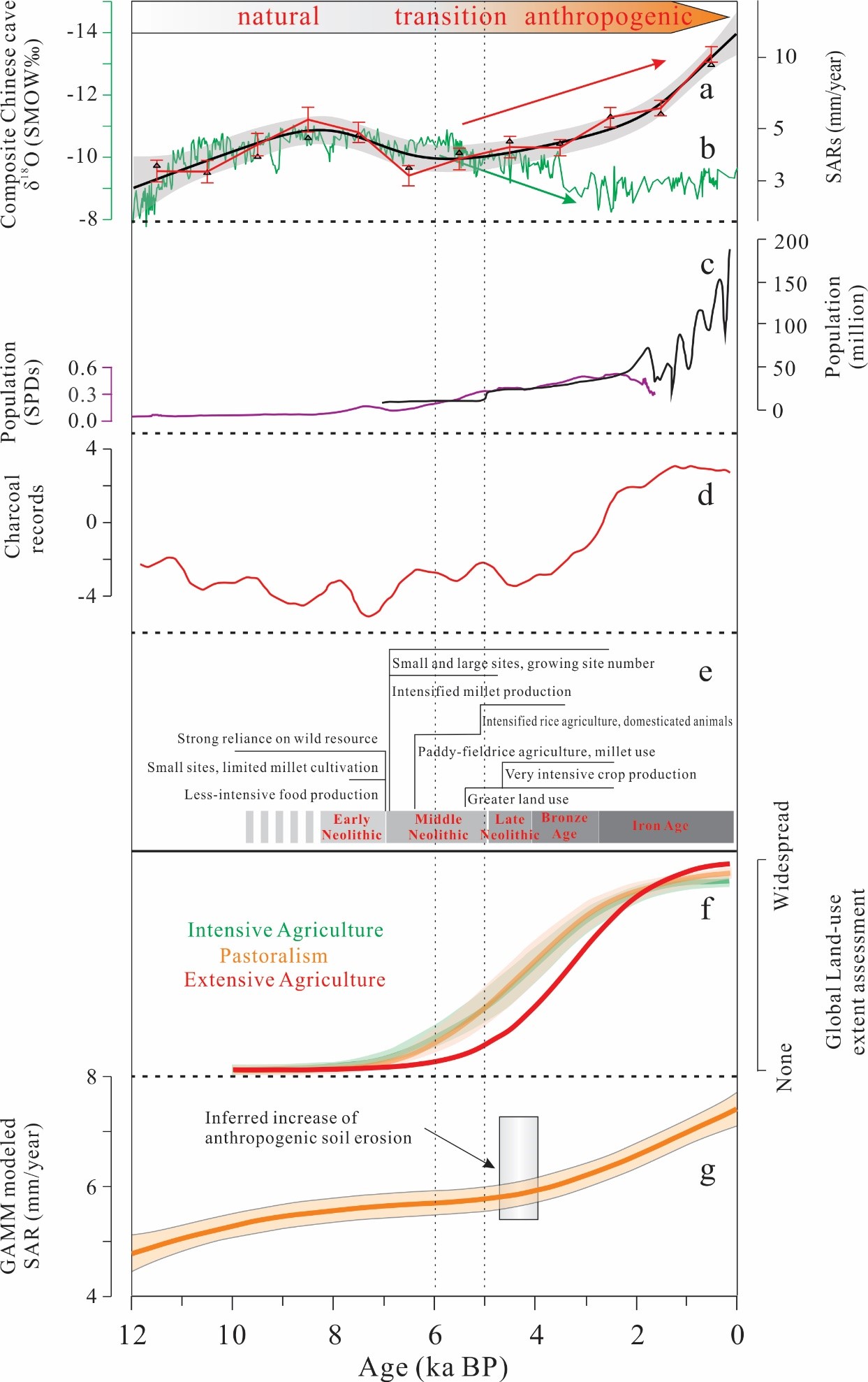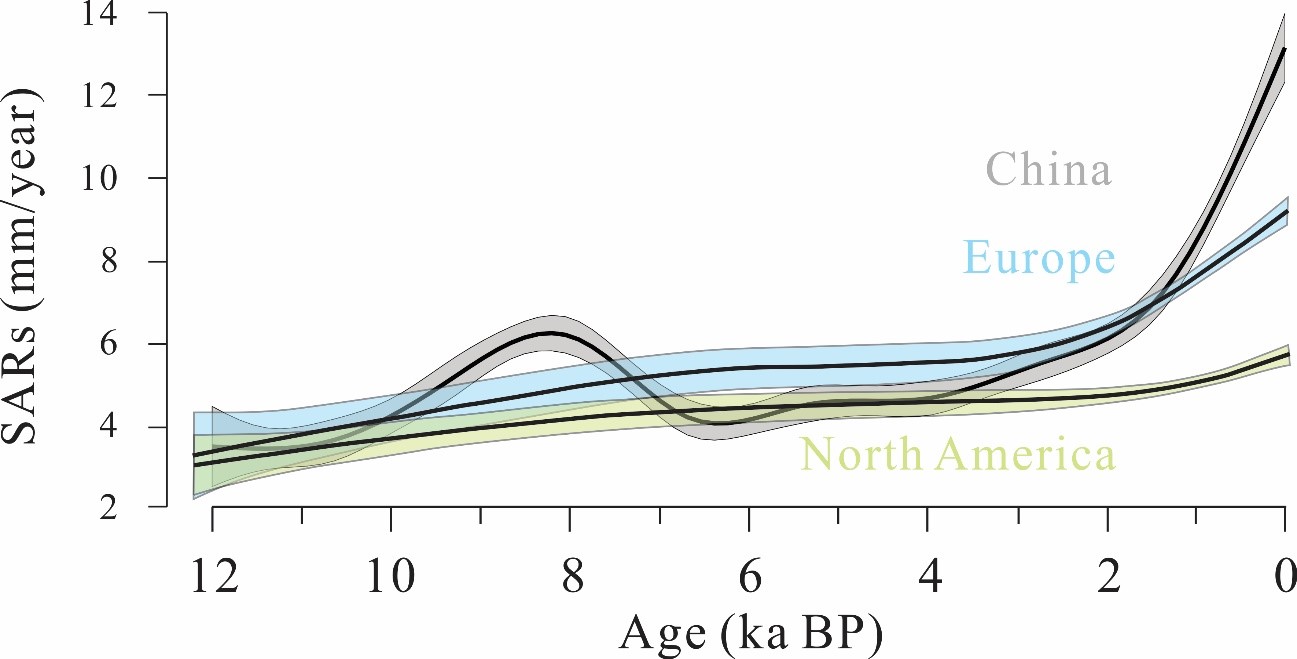The term “Anthropocene” was defined to indicate a new epoch, that humans become a major force of nature and have a significant impact on the environment.
However, the start of the Anthropocene remains an ongoing debate. Some favor a later start date of hundreds of years, considering the observed acceleration of most records. Others suggest that the cumulative effects over thousands of years should not be neglected. They highlight the major impacts of prehistoric humans on their environment much earlier, such as the use of fire, megafauna extinction, etc.
Recently, Assistant Professor Xinxin Li’s research team of the Department of Ocean Science and Engineering at the Southern University of Science and Technology (SUSTech) published their findings on signals of early human activities in accumulated sediment across Chinese lakes.
They collected the published absolute chronologies of sediment accumulation from 191 lakes across China. The scientists reconstructed the long-term (~40 kyr) variations of sediment accumulation rates, which are used as a proxy of regional soil erosion intensity.
Their study, entitled “Human Impacts Overwhelmed Hydroclimate Control of Soil Erosion in China 5,000 Years Ago”, was published in Geophysical Research Letters.

This study synthesized data of 191 sediment archives on millennial timescales across China (Figure 1). Sediment accumulation rates of lake sediments were applied as a semi-quantitative proxy for soil erosion intensity to assess the long-term (~40 kyr) variations of continent-scale soil erosion, explore the drivers of long-term soil erosion processes, and evaluate the timing and extent of anthropogenic impacts on soil erosion in China.

Figure 1. (a) The distribution of collected data of sedimentary archives in China in the study. (b) Histogram showing the counts of different dating methods used in the study. (c) Scatter plot of sediment accumulation rates (SARs) from collected sedimentary archives in China.
Firstly, Prof. Li’s team confirmed that soil erosion intensity indicated by lake sediment accumulation rates was highly variable over the past 40 thousand years (Figure 2). Within most periods, sediment accumulation rates are found to be temporally correlated with monsoon intensity and precipitation reconstructed from stalagmite δ18O and loess 10Be proxies, indicating hydroclimatic control of soil erosion in China. Other factors, such as annual temperature, CO2, and CH4, all showed less extent of variation at the millennial timescale than does stalagmite δ18O with sediment accumulation rates, showing an apparent lack of correlation with large-scale soil erosion intensity (Figure 2). The low number of early populations also preclude it as the major and direct driver of continent-scale soil erosion at that time. Overall, hydroclimate dominantly controlled soil erosion at millennial timescales from at least the late Pleistocene to the mid-Holocene in China.

Figure 2. (a) The sediment accumulation rates (SARs) variations in China lakes over the past 40 thousand years. (b) The regional hydroclimate of the Asian summer monsoon is indicated by the composite stalagmite δ18O record. (c) Chinese loess 10Be-based rainfall reconstruction. (d) Mean annual air temperature (MAAT) reconstructed by brGDGTs in a lake in southwest China. (e) Atmospheric CH4 contents reconstructed from Antarctic ice cores. (f) Atmospheric CO2 contents reconstructed from Antarctic ice cores. (g) Estimated population dynamics of ancient China.
Secondly, erosion intensity was decoupled from regional hydroclimate after ca. 5 ka BP (Figure 3). The transition was highly correlated with the increasing population and associated intensified land use, such as agricultural practices, intensified deforestation, livestock pastoralism, and mining-smelting. This trend is also in agreement with globally gradually intensified land-use change by prehistoric people. This evidence indicates that large-scale land use of early humans had induced significant landscape modification and was evidently recorded by the lake sediments of China.

Figure 3. (a) The GAM-smoothed trend of sediment accumulation rates (SARs) in China lakes over the Holocene. (b) The regional hydroclimate of the Asian summer monsoon is indicated by the composite stalagmite δ18O record. (c) The estimated population dynamics of ancient China. (d) Holocene charcoal records in China reflecting fire intensity. (e) Archaeological sequence and subsistence strategies indicating a transition from hunting-gathering to intensive agriculture practices in China. (f) Global land use extent assessment from archaeological knowledge. (g) Global trends of Holocene SARs based on GAM modelling on 641 lakes worldwide.
Therefore, the compiled dataset of sediment accumulation rates across China indicates that large-scale human impacts on soil erosion could extend back to ca. 5 ka BP. The change of dominant driver of soil erosion from natural processes to human disturbance in China happened at least 1,000 years earlier than the global average (Figure 3). This indicates the earlier development of intensive agricultural practices in ancient China than those of other continents. Meanwhile, the significant difference between sediment accumulation rates in lake records within China and those of North America and Europe also shows interesting inter-continental differences in prehistoric human impacts (Figure 4).

Figure 4. Comparison of sediment accumulation rates (SARs) between China (this study) and those of North America and Europe (modified from Jenny et al., 2019) during the Holocene.
This research confirms the profound implications of early human activities on landscape modification and expands our view on the onset and concept of the Anthropocene.
Fan Zhang, a postdoctoral student from the Department of Ocean Science and Engineering at SUSTech, is the first author of this paper. Dr. Li is the corresponding author.
This work was supported by the Southern Marine Science and Engineering Guangdong Laboratory (Guangzhou), the National Natural Science Foundation of China (NSFC), and the China Postdoctoral Science Foundation project.
Paper link: https://agupubs.onlinelibrary.wiley.com/doi/abs/10.1029/2021GL096983
To read all stories about SUSTech science, subscribe to the monthly SUSTech Newsletter.
Proofread ByAdrian Cremin, Yingying XIA
Photo By